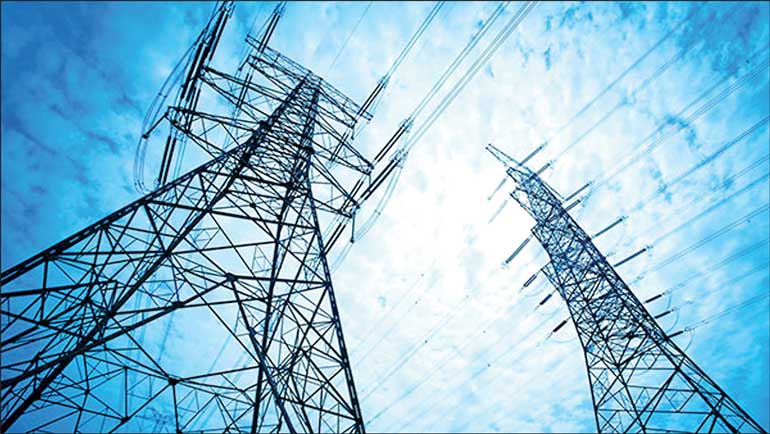Saturday Nov 15, 2025
Saturday Nov 15, 2025
Wednesday, 10 January 2024 00:26 - - {{hitsCtrl.values.hits}}

No new laws and regulations, including the hotly debated new electricity act, will help Sri Lanka, if we do not respect them and violate them as frequently as we like
|
The law, quite rightly says, renewable energy resources belong to the republic. (SLSEA Act No. 35 of 2007, clause 15(1)). PUCSL has forgotten their own gazetted rules, procedures and methodologies. The Government “thinks” they have the power to raise or reduce electricity prices, which they do not have. The opposition also thinks that whenever they come to power, they will have the power to meddle with electricity prices. Wrong.

For a few weeks now, there have been calls for electricity prices to be reduced, on account of unexpected rainfall received since October. Meetings called-up in Parliament of sectoral oversight committees, meetings at the Ministry of Power and Energy, meeting after meeting have been reported in the press, all to discuss how to reduce prices, how much is the profit of rain that must be distributed to electricity customers. A meeting in the Ministry of Power resulted in an argument on how much was the forecast sales, how the CEB’s rainfall forecast was inaccurate, etc.
All forecasts are inaccurate! That’s why they are called forecasts. If politicians, even CEB’s management and PUCSL, and the self-appointed experts do not know, all forecasts have a margin of error. River flow calculations are based on 100 years of actual rainfall data. So hydropower reservoirs and generators can be designed to capture a pre-defined river flow. They are not meant to capture the highest or even the 10th highest historic year of river flow. Then all the dams would have been taller, a larger area would have gone under water when reservoirs were built, and more people would have been displaced to make way for larger reservoirs. For example, the Mahaweli project would have cost about 50% more. The dams will never spill-over. There will be more generators lying idle, used typically once in 10 years, to capture the flood. That’s not the way.
So hydropower dams, reservoirs and generators are designed for an optimum point in the historic river flow data. In other words, if a dam never overflows, most-likely there has been a technical fraud to make the dam unnecessarily taller, hence the project more expensive.
So how to pass on the unexpected benefit of rainfall to the people?
Electricity Act 2009 clause 30(2) says there shall be a cost-reflective tariff methodology approved by PUCSL. Is there one? Yes, there is. PUCSL has done their job. Not now. Back in 2011, revised in 2016 and 2021.
PUCSL’s own gazette No 1978/21 of 2 August 2016 gives the exact dates CEB and LECO should submit their costs. It also gives the dates by which PUCSL has to do their job. It says, that customer prices can be adjusted only on 1st April and 1st October each year. So, Minister(s) cannot decide when to increase or decrease. It’s written down in the rules.
Looking forward to 1 April, CEB must do the following:
Submit the forecast generation costs for the six-month period from 1 April to 30 September. This submission should account for “forecast error” of generation costs. The forecast error means the difference between the forecast costs and actual costs of generating electricity. This submission has to be done before 1st January and PUCSL has to put that on their website by 1 January.
Has this been done by CEB: Not known; anything on PUCSL website: Cannot be seen.
So when CEB and PUCSL do not do their job, and not even say publicly there is a process, politicians “think” it is their job, assume a power that they do not have, and begin making announcements.
Sri Lanka’s forecast average variable cost of generation at transmission, forecast for the six months starting 1 July 2023 was about Rs. 29 per unit. The bulk supply account CEB should have published should begin with a forecast variable generation cost of about Rs. 29 per unit x 7775 million units = Rs. 225 billion (for six months). That means about Rs. 37 billion per month. At the end of each month, CEB should have published the forecast generation cost and the actual generation cost. For example, if it rained heavily in November, allowing hydropower generation to be 30% more than the forecast, the saving may be Rs. 7 billion for November.
This bulk supply account, which is a running balance between the forecast and actual costs, and the forecast and actual income, must be published, according to the rules. Does CEB publish it: No.
So as the year progresses, by 31 December, if the rainfall was so intense, perhaps there would have been Rs. 30 billion accumulated in the bulk supply account, previously budgeted for oil and coal, but was not required owing to heavier rainfall. If the account was published, the public will see the money building up, have confidence that renewable energy, that legally belongs to them and not for politicians to score points, will cushion electricity prices very soon.
That Rs. 30 billion must be transparently passed on to customers, almost automatically, from 1 April onward. No political promises or announcement is required, at all. There is no need for parliamentary oversight committees to have special meetings, wasting millions of rupees worth of officials’ time and fuel for them to attend meetings at Parliament. What is given in the law, rules, methodologies, and procedures on how to adjust electricity prices are all violated by the very same institutions that established such laws. In some cases, the very same individuals who wrote the rules are violating the rules themselves.
New Electricity Act
No new laws and regulations, including the hotly debated new electricity act, will help Sri Lanka, if we do not respect them and violate them as frequently as we like. That’s what is happening now.
No new laws and regulations will help Sri Lanka, unless we are honest about the costs of various forms of electricity generation. Sri Lanka’s electricity costs are almost the highest in the S and SE Asian region. The average generation costs of Rs. 29 (Rs. 32 at distribution) must be brought down to Rs. 18 (Rs. 20 at distribution), to say we are on par with other countries.
|
World Cup for Sri Lanka (not for cricket)
All contracts to produce electricity, whether they come from the back door or the front door, including rooftop solar, are now signed at prices of Rs. 37 or more. Therefore, your electricity prices will only go up and up, until Sri Lanka gets the world cup for electricity prices. That day is not too far.
Since procedures are violated by the Ministry, PUCSL and CEB, especially in an election year, there may be some temporary relief, but the wrong underlying business principles will soon take Sri Lanka’s electricity prices to the top of the world.